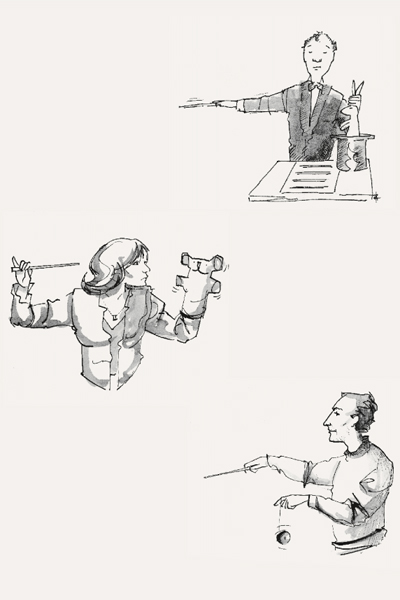During the civil war, the Puritan iconoclast William Dowsing recorded with satisfaction his destructive visit in 1644 to the parish church of Sudbury in Suffolk: ‘We brake down a picture of God the Father, 2 crucifixes and pictures of Christ, about an hundred in all.’ The Taleban’s decision in 2001 to blow up two gigantic statues of Buddha in the Bamiyan valley in Afghanistan was more spectacular but not different in kind. War gives licence to such subterranean urges. In an order issued exactly three centuries after Dowsing’s expedition, General Sir Henry Maitland Wilson, supreme Allied commander in the Mediterranean, explained why great art needed to be protected. ‘Works of art are not like diamonds,’ he told the troops. ‘However valuable a diamond may be, you can always get another like it. But the “Mona Lisa” or the Sistine Chapel in the Vatican are unique… no money could ever replace them.’
Yet the furious fighting in Italy inexorably brought other priorities to the fore. Wilson’s predecessor, Dwight D. Eisenhower, pragmatically recommended that where a choice arose between preserving art and gaining a military objective with minimum loss of life, the art should go. The near-destruction of the incomparable medieval monastery of Monte Cassino under Allied bombardment was one consequence. Nevertheless, to their credit, the Allies did recognise the transcendent importance of the paintings, sculptures and buildings within the Italian peninsula. In 1943 a Monuments, Fine Arts and Archives section was established to protect the most significant objects.
This is Robert Edsel’s third book celebrating the achievements of the American ‘Monuments officers’, a prolific output that underlines the lack of comparable interest in the work of their British counterparts, among them distinguished figures such as Leonard Woolley and Mortimer Wheeler. Indeed it was a British collaboration between Sir Solly Zuckerman and Air Chief Marshal Sir Arthur Tedder, in command of Allied air power, that safeguarded the most important cultural sites from bombing by identifying them and removing them from the list of targets. On the ground, however, protection was a matter of painstakingly finding, guarding and returning to their original sites works that might have been removed by looters or by curators for safekeeping.
Here, by presenting Americans as the real saviours of Italy’s cultural heritage, Edsel seriously distorts reality. One of his examples is the recovery of the paintings and sculptures from the Uffizi gallery and Pitti palace in Florence. Almost 250 of these masterpieces, including Botticelli’s ‘Primavera’ had been stored in Osbert Sitwell’s villa of Montegufoni where they were discovered in July 1944 by Wynford Vaughan Thomas, a BBC war correspondent, and my father, Eric Linklater. It was the most remarkable event in my father’s experience of the campaign in Italy, of which he was the official historian. He never ceased to tell of his excitement as he and Vaughan Thomas explored the gloomy galleries of Montegufoni and came upon what at first they thought must be copies, then gradually realised that stacked against the walls were the original works that constitute the foundation of Renaissance art. They hurried through the gloom of the shuttered rooms shouting out to each other ‘Uccello’, ‘Giotto’ and ‘Botticelli’.
In his eyewitness account of the episode, at least 95 per cent of the credit for their preservation belonged to the Italian curators, Giovanni Poggi and Cesare Fasola, respectively director and librarian of the Uffizi, who by guile, persistence and passion had defended their treasures from German, fascist and Allied depredation. Next came the Mahratta Light Infantry, the frontline troops occupying the villa who, when told of the masterpieces, at once placed sentries to guard them, and after them the Eighth Army’s General Oliver Leese, who detailed a permanent guard when the Indians moved forward. Finally, three days later, appeared the American Fred Hartt, the hero of the whole episode in Edsel’s book, who cared for the collection until Florence was liberated.
Not only does Edsel fail to give due weight to the universal urge to protect such works, he never really understands the atavistic nature of war that is its opposite. Finding some badly slashed canvases, my father, a private soldier on the Western Front in the previous war, tried to put himself in the place of the perpetrators, young men about to go into battle. Confronting death, he thought, they must have found the value attached to a mere painting an affront, and ‘out come the jack knives and a painted canvas is ripped across to show their loathing and contempt of life and its silly arts’.
The real reason great art requires preservation is precisely because it is life-affirming. And although reprehensible, my father’s own response to the beauty of Botticelli’s ‘Primavera’ provided practical testament to its power. ‘I was alone, and standing tiptoe I was tall enough,’ he wrote later. ‘I kissed the pregnant Venus, the Flowery Girl, and the loveliest of the Graces: her on the right. I was tempted to kiss them all but feared to be caught in vulgar promiscuity.’
Got something to add? Join the discussion and comment below.
Get 10 issues for just $10
Subscribe to The Spectator Australia today for the next 10 magazine issues, plus full online access, for just $10.
You might disagree with half of it, but you’ll enjoy reading all of it. Try your first month for free, then just $2 a week for the remainder of your first year.










Comments
Don't miss out
Join the conversation with other Spectator Australia readers. Subscribe to leave a comment.
SUBSCRIBEAlready a subscriber? Log in